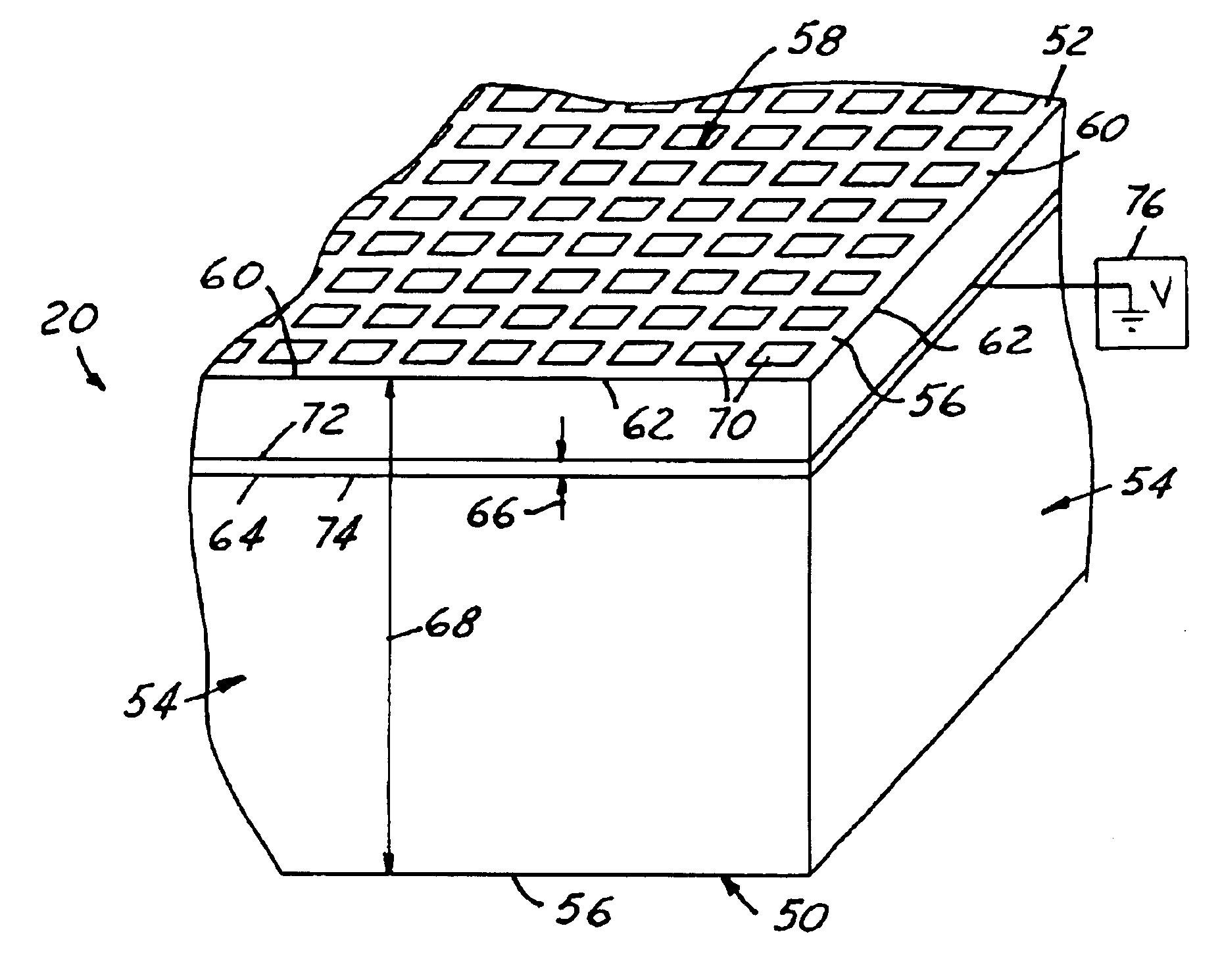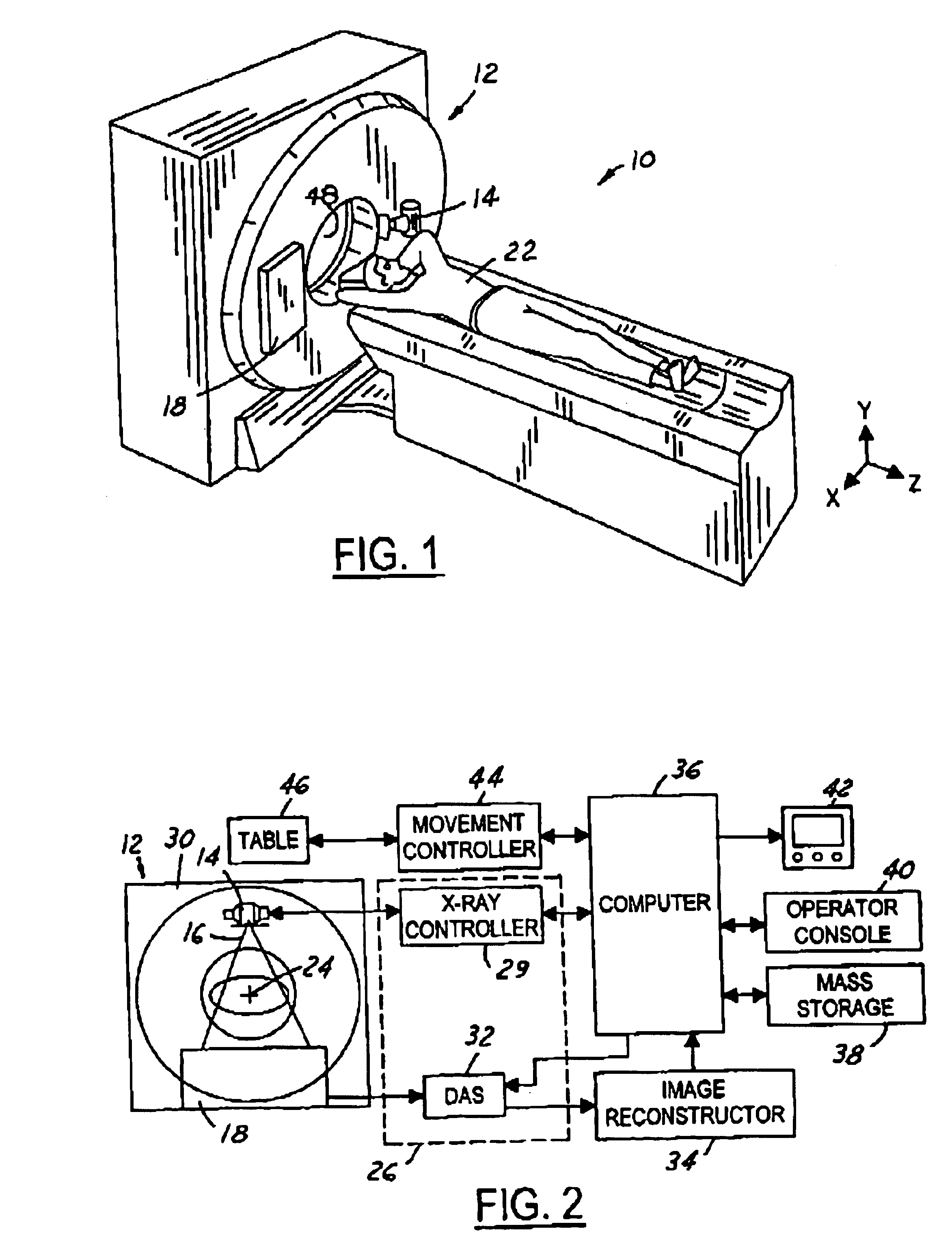Guard ring for direct photo-to-electron conversion detector array
a detector array and photo-to-electron technology, applied in the direction of instruments, radiation controlled devices, optical radiation measurement, etc., can solve the problems of significant non-uniformity or visible artifacts, high undesirable artifacts around the edges of tiles, and the lik
- Summary
- Abstract
- Description
- Claims
- Application Information
AI Technical Summary
Benefits of technology
Problems solved by technology
Method used
Image
Examples
Embodiment Construction
)
[0015]Referring now to FIG. 1, which is an illustration of a computed tomography (CT) imaging system 10 for use with the detector assembly 18 of the present invention. Although a particular CT imaging system 10 has been illustrated, it should be understood that the detector assembly 18 of the present invention can be utilized in a wide variety of imaging systems. The CT imaging system 10 includes a scanner assembly 12 illustrated as a gantry assembly. The scanner assembly 12 includes an x-ray source 14 for projecting a beam of x-rays 16 toward a detector assembly 18 positioned opposite the x-ray source 14. The detector assembly 18 includes a direct conversion detector array 19 comprised of a plurality of direct conversion detector elements 20 (see FIG. 3) which combine to sense the projected x-ray photons 16 that pass through an object, such as a medical patient 22. Each of the plurality of direct conversion detector elements 20 produces an electrical signal that represents the int...
PUM
| Property | Measurement | Unit |
|---|---|---|
| electric potential distribution | aaaaa | aaaaa |
| height | aaaaa | aaaaa |
| height | aaaaa | aaaaa |
Abstract
Description
Claims
Application Information
 Login to View More
Login to View More - R&D Engineer
- R&D Manager
- IP Professional
- Industry Leading Data Capabilities
- Powerful AI technology
- Patent DNA Extraction
Browse by: Latest US Patents, China's latest patents, Technical Efficacy Thesaurus, Application Domain, Technology Topic, Popular Technical Reports.
© 2024 PatSnap. All rights reserved.Legal|Privacy policy|Modern Slavery Act Transparency Statement|Sitemap|About US| Contact US: help@patsnap.com










